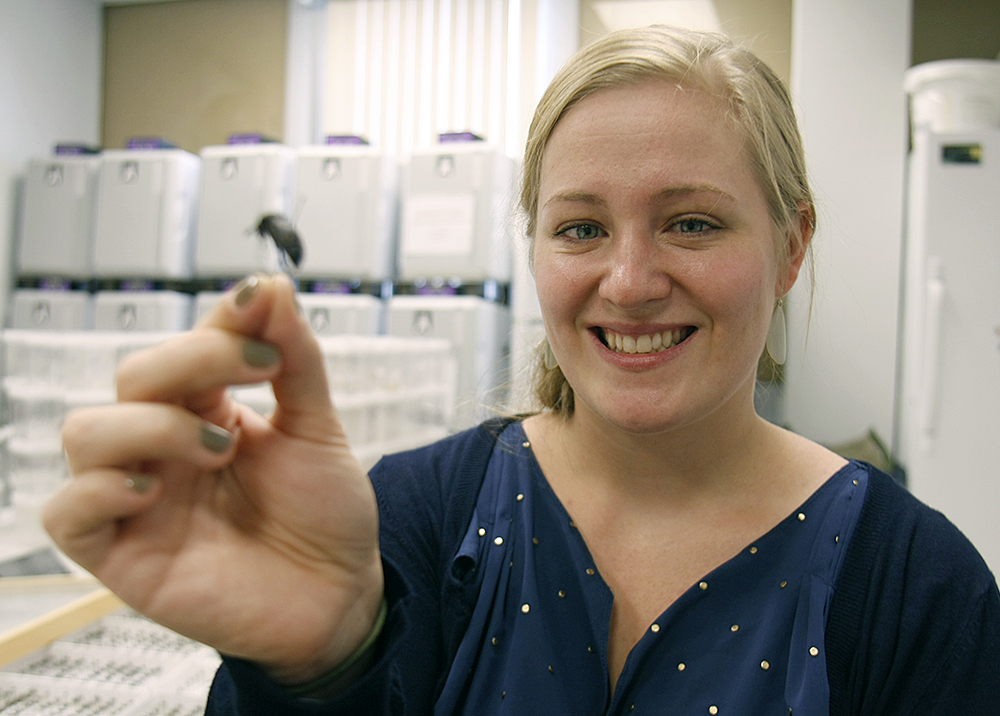
Amanda Fujikawa, a graduate student at the University of Nebraska-Lincoln, wanted to better understand how large dead animals effect local environments. So she went out to the Nebraska Sandhills to find out.
What she learned was completely unexpected.
The 28-year-old Ph.D. student at the School of Natural Resources knew what years of forensic science study had taught her. When something dies, blowflies and their maggots start a feeding frenzy on the rotting carcass, followed by a variety of beetles and other scavengers. By examining these critters — which ones are there and which aren't — crime scene investigators can make a fair estimation on the time of death.
But Fujikawa's trip to the Sandhills turned those widely accepted conventions on their head. Beetles, it turns out, come first.
"That's why we were so flabbergasted," Fujikawa said.
Fujikawa staked out 20 dead mammals in remote areas of the Valentine National Wildlife Refuge, expecting to catch a few flies and count some bugs. Then she could move on to the central mission—studying the effect of large carcasses. But after examining a day-long dead rabbit, the numbers didn't add up.
No flies. No eggs. No maggots.
Beetles everywhere.
And more were on the way. She could hear them buzzing through the tall grass.
"You could actually watch them come in," said Fujikawa, who completed her master's in entomology in 2009.
Jeffrey Wells, a biologist at Florida International University, said this discovery could mean that forensic entomology needs to rethink some old assumptions, according to a Sept. 13 article in Scientific American.
"One danger is that if this goes unrecognized, the entomologist might significantly underestimate the time since death," Wells told Scientific American.
Fujikawa cautioned that her study is relatively small, covers a small location, and could be a "geographic anomaly." But she intends to expand her research by returning to the Sandhills next summer. She also plans to examine large animal carcasses—and the bugs that feed on them—closer to her Lincoln home at Nine-Mile Prairie, a 230-acre preserve on the outskirts of Lincoln.
Fujikawa grew up in Rapids City, S.D., but she has strong ties to law enforcement and Nebraska. Her parents both grew up in Valentine, and her father, Jerry Roe, has been a U.S. Marshal since 1986. And her grandfather, Melvin Christensen, retired in 2011 after serving as Cherry County Sheriff for 30 years.
Fujikawa said she knew she wanted to be an entomologist since she was 5 years old. But her family's history with law enforcement was hard to resist, so studying insects to help legal investigations—forensic entomology—seemed the perfect fit.
Fujikawa has already made significant contributions to her field. Her master's thesis demonstrated the effects of blowflies in blood spatter patterns at crime scenes. She also discovered that insect feces glows under a certain wavelength of light, but blood will not, according to the Scientific American article.
Her adviser, Leon Higley, told Scientific American that her research could have a lasting impact.
"I wouldn't be surprised if 50 to 60 years from now, [people] are still referring to her work," he said.
Read the Scientific American article at: http://www.scientificamerican.com/article.cfm?id=forensic-entomologist-upends-conventional-theory-on-order-of-bugs-that-feast-on-corpses
- Charlie Litton, School of Natural Resources